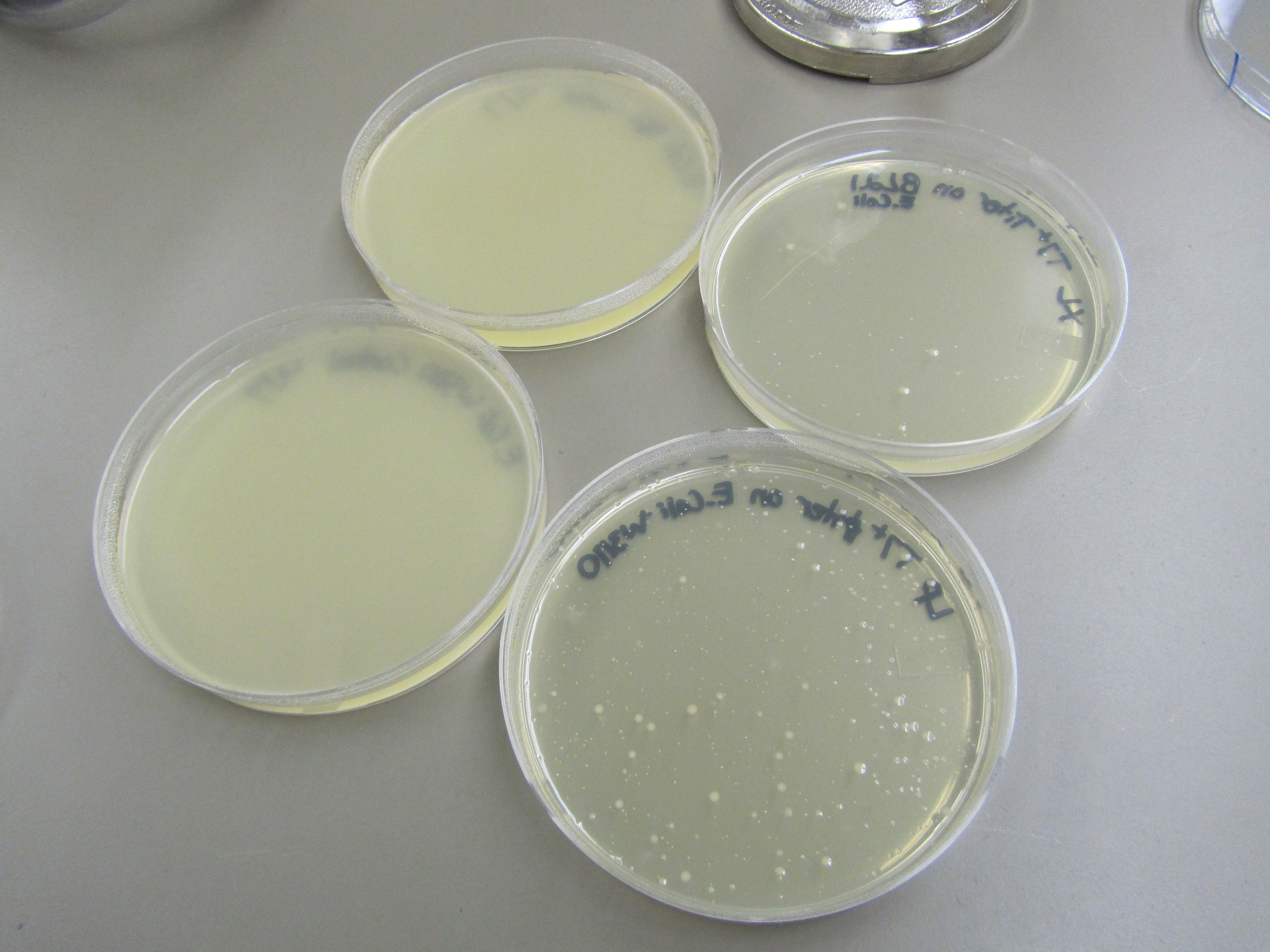Team:BYU Provo/Notebook/SmallPhage/Winterexp/Period2/Exp/4.8 T7 phage viability assay 2
From 2013.igem.org
| Line 134: | Line 134: | ||
2) Spot test compared to control (top: BL21; bottom: W3110) | 2) Spot test compared to control (top: BL21; bottom: W3110) | ||
| - | + | [[File:4.8SpotTest.JPG|400px|center]] | |
Circular plaques formed for each spot test. The plaques decreased in size as phage in LB becomes more diluted. No contamination seen. | Circular plaques formed for each spot test. The plaques decreased in size as phage in LB becomes more diluted. No contamination seen. | ||
| Line 140: | Line 140: | ||
3) Titer test compared to control (top: BL21; bottom: W3110) | 3) Titer test compared to control (top: BL21; bottom: W3110) | ||
| - | + | [[File:4.8Titer.JPG|400px|center]] | |
Phage is clearing up the entire plate. This indicates that the phage we used are at too high of a concentration. | Phage is clearing up the entire plate. This indicates that the phage we used are at too high of a concentration. | ||
Revision as of 22:51, 5 June 2013
| Small Phage March - April Notebook: Experiments
| ||||||||||||||||||||||||||||
|
|
4.8 T7 Phage Viability Test 2
I) Purpose - Test the viability (concentration if possible) of the T7 we got - Become familiar with virus titering techniques - Identifying T7 mutant and T7 WT II) Expected outcome - Should see multiple plaques forming on a lawn of E coli (confluent growth) - T7 WT should grow, even though T7 mutant didn’t (4.5 phage viability assay) III) Reagent record T7 phage *; E coli BL21; Agar: ×2 prepared by Jordan in 500mL glass bottle; LB: prepared by Jordan in big Erlenmeyer flask; overnight bacteria culture: set up on Sat 3/6 at 6pm IV) Actual procedures / observations 1) Dilution series of bacteriophage and its incubation with E coli
2) Perform spot test
30 Phage plaque size test
4) Check up on phage + bacteria viability in 24 hours. IV) Results 1) Plates
2) Spot test compared to control (top: BL21; bottom: W3110) Circular plaques formed for each spot test. The plaques decreased in size as phage in LB becomes more diluted. No contamination seen. 3) Titer test compared to control (top: BL21; bottom: W3110) Phage is clearing up the entire plate. This indicates that the phage we used are at too high of a concentration. V) Conclusions - T7* is the WT T7 phage. It is able to grow on E coli BL21. - Our stock phage liquid culture is at too high concentration to form a few individual plaques on a plate. It’s clearing up the entire area. VI) Proposed next step 1) Perform the same spot test with more diluted T7 solution. Look for where the plaques are barely forming.
| |||||||||||||||||||||||||||
 "
"

